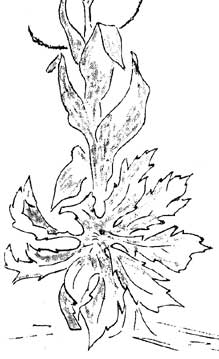|
UNITED STATES
DEPARTMENT OF THE INTERIOR
NATIONAL PARK SERVICE
Mount Rainier National Park
|
MOUNT RAINIER NATURE NOTES
|
| Vol. VIII |
May, 1930 |
No. 5 |
Issued monthly during the winter months,
semi-monthly during the summer months by the Mt. Rainier Nat'l Park
Nature Guide Service.
|
C. Frank Brockman,
Park Naturalist. |
O. A. Tomlinson,
Superintendent. |

|

|
Heralding the coming of the new season, with the abundant and
diversified flora that has made this National Park famous, comes the
Sweet Coltsfoot (Petasites speciosa) -- a flower not possessed of any
great deal of beauty and one that would, no doubt, be entirely over
looked at a later date when other, more favored species lend their
beauty to the forest or to the alpine meadows. At this early date,
however, it is appreciated because of what it signifies.
We found it growing on moist banks near streams, as a general rule,
and from its creeping root-stalks grow the thick flower stems which bear
a cluster of purple-white flower heads -- for it is a member of the
Composite or Sunflower family.
The first of these was noticed near the Nisqually Entrance (elev.
2003') on March 30th but now they are quite abundant in suitable
locations beyond Longmire.
|
Click to see a copy of the original pages of this
article (~96K)
|

